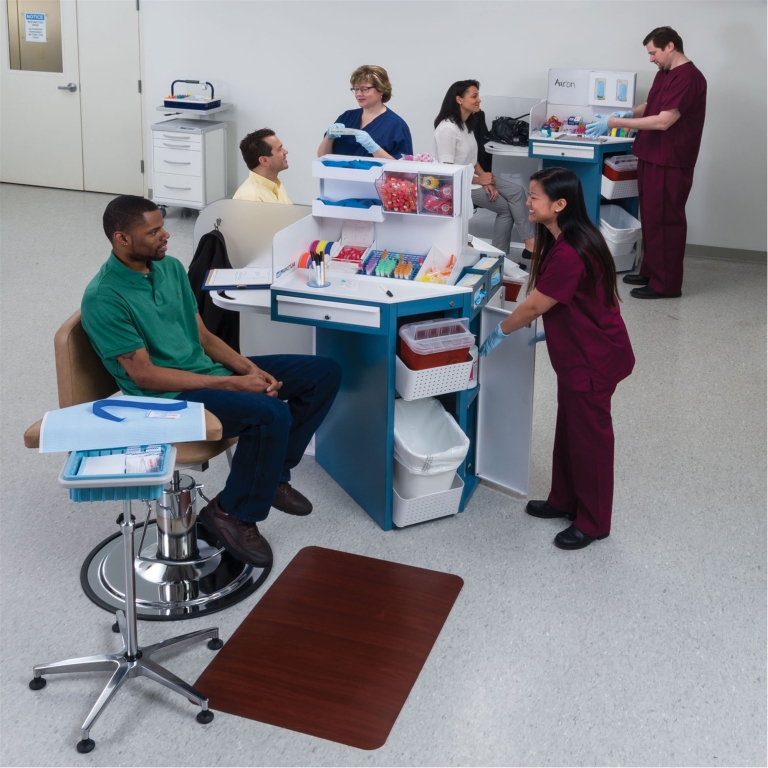How to Obtain Your Phlebotomy Certification: A Step-by-step Guide for Aspiring Medical Professionals
Embarking on a career as a certified phlebotomist is a rewarding pathway in the healthcare industry.phlebotomists play a vital role in collecting blood samples for testing, which aids in diagnosing and treating various health conditions. If you’re considering becoming a certified phlebotomist, understanding the certification process is essential. This complete guide outlines the necessary steps, tips, and insights to help you achieve your goal efficiently.
Introduction
In today’s healthcare landscape, certified phlebotomists are in high demand, offering promising career opportunities across hospitals, clinics, diagnostic laboratories, and blood donation centers. Certification not only enhances your credibility but also broadens your employment prospects and salary potential. Whether you’re just starting your journey in the medical field or seeking to specialize further, obtaining your phlebotomy certification is a crucial step. Let’s explore how you can navigate the certification process, from education requirements to passing the exam, with practical tips along the way.
Understanding the Basic Requirements for Phlebotomy Certification
Before diving into the certification process, it’s crucial to understand the general prerequisites set by certifying agencies. While specific requirements can vary depending on the state or certification body, the following are common:
- Minimum Education: High school diploma or GED equivalent.
- Age: Typically at least 18 years old.
- background Check: Some programs require clearance, especially if you’ll be working with vulnerable populations.
- CPR Certification: Frequently enough recommended or required to demonstrate basic life support skills.
Ensuring you meet these baseline criteria is the first step toward obtaining your phlebotomy certification. Next, you’ll want to focus on education and training requirements.
Educational Paths to Certified Phlebotomist
Several educational options are available for aspiring phlebotomists:
- Certificate Programs: Short-term courses offered by community colleges, vocational schools, and healthcare training centers that typically last 4 to 12 weeks.
- Postsecondary Education: Some pursue associate degrees in medical assisting,healthcare,or laboratory sciences that include phlebotomy training components.
- On-the-Job training: Rare but possible under supervised settings, often supplemented with formal certification courses.
Choosing the right programme depends on your career goals,time availability,and budget. Ensure that the program you select is accredited and recognized by certifying organizations like the American Society for Clinical Pathology (ASCP), National Healthcareer Association (NHA), or other reputable bodies.
Gaining Hands-On Training and Practical Experience
Practical experience is a cornerstone of successful phlebotomy certification. Most educational programs include clinical externships or internships, providing real-world training under supervision. key aspects of practical training include:
- Learning proper blood collection techniques
- Safely handling and disposing of sharps and biohazard waste
- Maintaining sterile and safe work environments
- Handling emergencies or adverse reactions
Mastering patient interaction and communication skills
Some programs may require a minimum number of successful blood draws to qualify for certification. Practical experience not only prepares you for certification exams but also boosts your confidence and competency as a professional.
Preparing for and Passing the Phlebotomy certification Exam
Once you’ve completed your education and practical training,the next milestone is passing the certification exam. Here’s an overview of this process:
Step 1: Select a Certification Body
Popular certifying agencies include:
| Certification Body | Recognition | Exam Options |
|---|---|---|
| American Society for Clinical Pathology (ASCP) | Widely recognized nationally | Certified Phlebotomy Technician (CPT) |
| National Healthcareer Association (NHA) | Popular for entry-level certifications | Certified Phlebotomy Technician (CPT) |
| American medical Technologists (AMT) | Respected professional organization | Registered phlebotomy Technician (RPT) |
Step 2: Meet Certification Eligibility Requirements
Ensure you have met the necessary prerequisites, including completed your education, training hours, and clinical experience.
Step 3: Prepare for the Exam
Utilize study guides, practice exams, and review courses provided by the certification organizations. Focus areas typically include:
- Basic anatomy and physiology
- Blood collection procedures
- Safety and infection control
- Patient interaction and communication
- Dealing with complications or adverse reactions
Step 4: Schedule and Take the Exam
Most exams are offered online or at designated testing centers. Prepare thoroughly, arrive early, and stay calm during the test. Passing scores generally range from 70% to 80%, depending on the certifying body.
Step 5: Maintain Certification
Certification often requires continuing education and periodic renewal-typically every 2 years. Staying current enhances your skills and ensures compliance with industry standards.
Benefits of Becoming a certified Phlebotomist & Practical Tips
Certification offers numerous advantages, including:
- Enhanced job prospects and higher earning potential
- Verification of your skills and professionalism
- Opportunities for career advancement in healthcare
- Increased confidence and competence in blood collection techniques
Practical tips for success:
- Choose accredited training programs with hands-on clinical practice
- Stay organized with a study schedule and utilize practice exams
- join professional associations for networking and resources
- Prioritize patient safety and communication skills
- Keep your CPR certification current
Real-Life Case Studies of Successful Phlebotomists
Learn from seasoned professionals how certification transformed their careers:
Case Study 1: From Novice to Expert
Jane, a recent graduate, completed an accredited phlebotomy program, obtained her certification, and secured a position in a busy hospital laboratory. Within two years, she was promoted to lead technician, thanks to her certification and dedication.
Case Study 2: Overcoming Challenges
Mark faced initial difficulties with patient interactions. Through certification training emphasizing communication, he improved his rapport with patients, leading to better samples collection and job satisfaction.
conclusion
Obtaining your phlebotomy certification is a pivotal step towards building a successful career in healthcare. By understanding the requirements, pursuing quality education, gaining practical experience, and preparing diligently for the certification exam, you can open doors to rewarding opportunities. Remember, certification not only validates your skills but also elevates your confidence and professionalism in the healthcare field. Start planning today,and take the first step toward becoming a trusted and certified phlebotomist!
